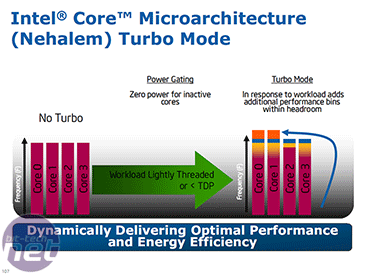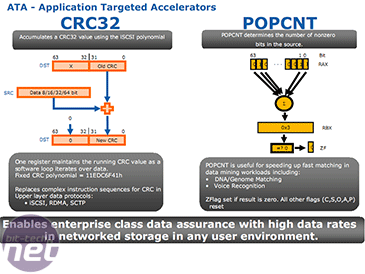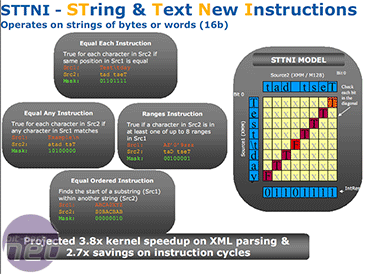
Turbo Mode
No it has nothing to do with cars, but it is like a bit of a kick up the backside when you need it. Basically, the CPU has an overall TDP - this is the upper most power use when all cores, cache and memory are blazing through your workload.However, not every application uses all four cores and, since individual cores can enter sleep states while others digest a more linear threaded application, this effectively frees up some power overhead to overclock those working cores a little. If an application is lightly threaded and uses less than full resources, simply increasing the frequency of the cores in use will keep the CPU within its overall TDP while creating a more efficient processor that finishes its task faster.
Turbo mode is displayed in the BIOS as the "Enhanced Intel Speedstep Technology" and doesn't require extra software to use it. Instead, the operating system simply sees it as an additional Power (P-)state and uses it when it requires more performance from a single or few cores.
The Power Control Unit (PCU) monitors the overall current, temperature and power output and keeps the silicon within certain operating limits, which means that the CPU will never unintentionally burn itself out or crash for getting too hot. The PCU simply looks for certain preset conditions and then applies the frequency increase while keeping an eye on everything.
SSE4.2
Expanding on what Penryn introduced with SSE 4.1, version 4.2 is, well, a 0.1 step upwards. This includes SSTNI: "Accelerated String and Text Processing" that offers faster XML parsing, data matching and comparisons; ATA, or application targeted accelerators that including Genome Mining and handwriting recognition; CRC32 for faster error correction calculations and greater efficiency in iSCSI applications and network storage.Overall, some specific application level significance but the network and storage optimisations should benefit businesses and perhaps even some power users, but there are no specific gaming, audio/video or more consumer level accelerators from SSE improvements this time around.

MSI MPG Velox 100R Chassis Review
October 14 2021 | 15:04














Want to comment? Please log in.